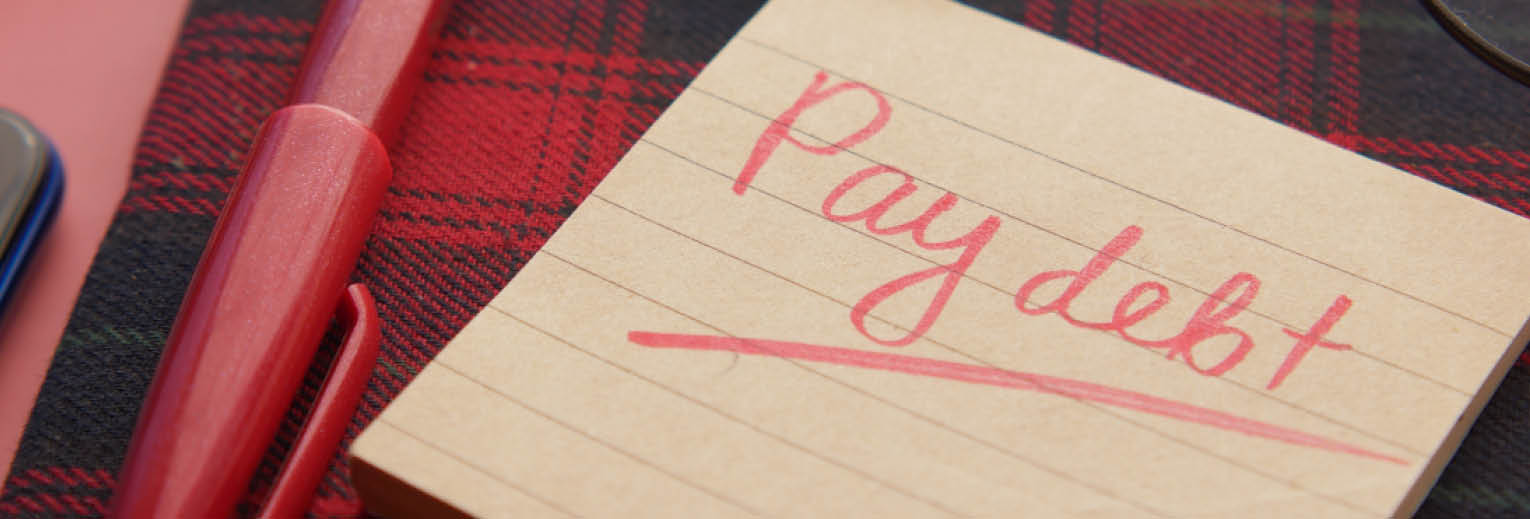Debt can be a formidable adversary on the road to financial freedom. Whether it's student loans, credit card balances, or a mortgage, most of us have some form of debt in our lives. While it's not necessarily a bad thing, the way you manage and pay down your debt can significantly impact your financial well-being. That's why it's essential to perform regular check-ups on your debt to gauge your progress and make informed decisions. In this blog, we're going to discuss why these check-ups are crucial and how you can effectively manage and pay down your debt.
The Importance of Debt Check-Ups
When it comes to managing your debt, the adage "out of sight, out of mind" doesn't apply. Ignoring your debt can lead to financial stress and hinder your ability to achieve your financial goals. Regular debt check-ups can help you in several ways:
- Assessing Your Financial Health: A debt check-up serves as a financial health assessment. It allows you to understand the state of your finances and whether your debt is manageable or spiraling out of control.
- Setting and Tracking Goals: By regularly reviewing your debt, you can set realistic goals for paying it down. These goals can motivate you and keep you on track.
- Spotting Potential Issues: You might identify early signs of financial trouble during a debt check-up, enabling you to take corrective action before things get worse.
- Reviewing Interest Rates: Interest rates can fluctuate, and if you're not paying attention, you might be overpaying on your debts. A check-up helps you monitor these rates and refinance if necessary.
Now that you understand the importance of debt check-ups let's delve into how to perform an effective one.
Step 1: Gather All Debt Information
The first step in your debt check-up is to gather all the necessary information about your debts. This includes:
- The type of debt (credit card, student loan, mortgage, etc.)
- The current balance
- The interest rate
- Minimum monthly payments
- Due dates
Having this information in one place will provide a clear picture of your debt landscape.
Step 2: Calculate Your Debt-to-Income Ratio
The debt-to-income ratio is a vital financial metric that lenders use to assess your ability to handle debt. To calculate it, add up all your monthly debt payments and divide them by your gross monthly income. Ideally, your debt-to-income ratio should be below 36%. If it's higher, it may be time to reevaluate your debt situation.
Step 3: Create a Budget
Budgeting is the foundation of effective debt management. Determine your monthly income and allocate it to necessary expenses, including debt payments. Ensure you're not spending more than you earn, and if you are, make adjustments to free up more money for debt repayment.
Step 4: Prioritize High-Interest Debt
Debts with high-interest rates can be a significant drain on your finances. Prioritize paying down these debts first, as they cost you more in the long run. This strategy can save you money and help you become debt-free faster.
Step 5: Explore Debt Payoff Strategies
Several strategies can help you pay down your debt more efficiently:
- Debt Snowball: This approach focuses on paying off the smallest debts first, providing a psychological boost as you clear each one.
- Debt Avalanche: Here, you tackle the highest-interest debt first, potentially saving you more money in the long term.
- Debt Consolidation: Consider consolidating multiple debts into one loan with a lower interest rate, which can simplify repayment.
- Refinancing: Refinance high-interest loans, such as student loans or a mortgage, to take advantage of lower interest rates.
Step 6: Set and Monitor Your Progress
Setting specific, measurable goals is vital for any debt management plan. Whether it's paying off a specific amount within a given timeframe or achieving a lower debt-to-income ratio, regularly monitor your progress and adjust your plan as necessary.
Step 7: Build an Emergency Fund
One crucial aspect of debt management is being prepared for unexpected expenses. Without an emergency fund, you might end up increasing your debt in emergencies. Aim to build an emergency fund with at least three to six months' worth of living expenses.
Step 8: Seek Professional Advice if Needed
If your debt situation feels overwhelming, don't hesitate to seek professional advice. Licensed insolvency Trustees, Credit counselors, financial advisors, or debt consolidation services can provide valuable guidance and support in managing your debt.
In conclusion, performing regular check-ups on your debt is an essential part of your financial journey. It allows you to assess your financial health, set and track goals, identify potential issues, and make informed decisions about managing and paying down your debt. By following the steps outlined in this blog, you can regain control of your finances and work towards a debt-free future. Remember, the key is consistency and commitment to your financial well-being. So, start your debt check-up today, and pave the way to a brighter financial future!
